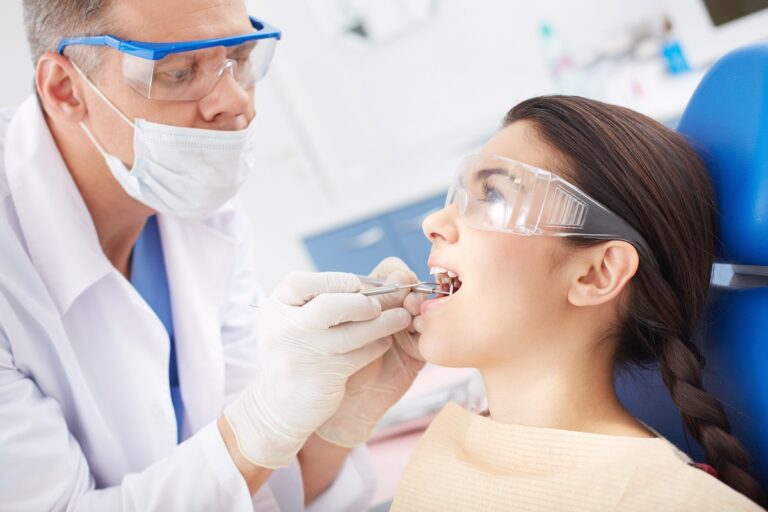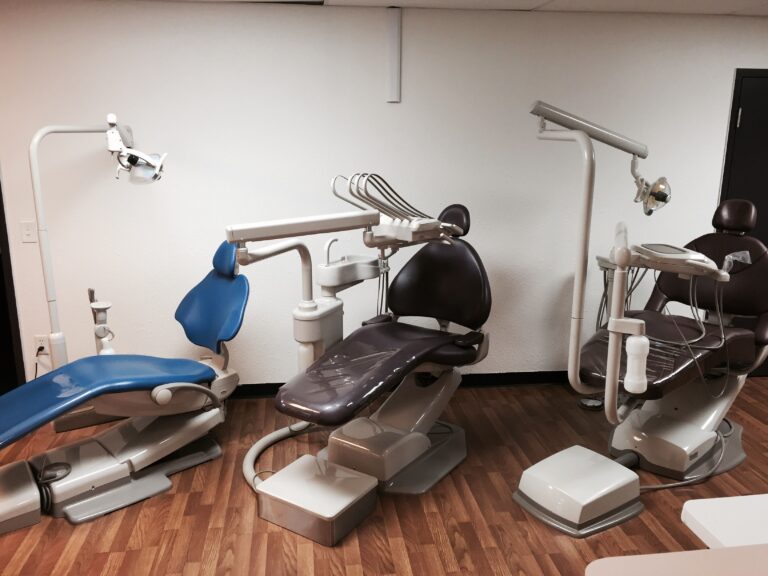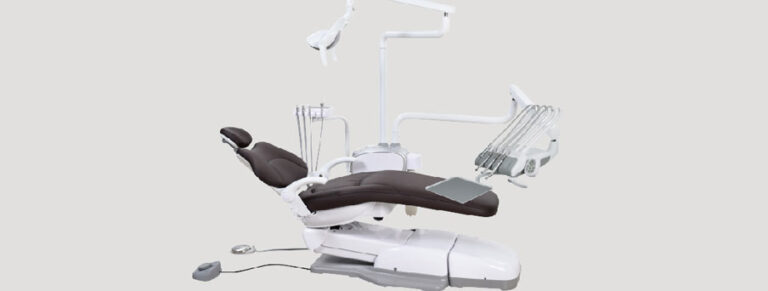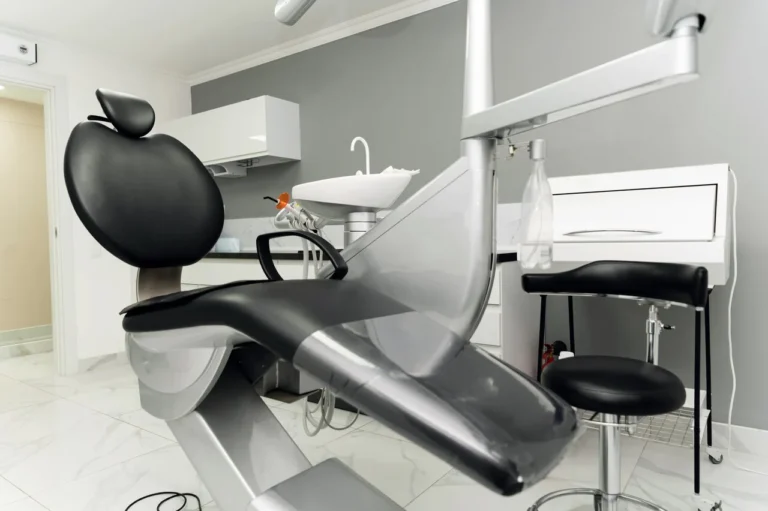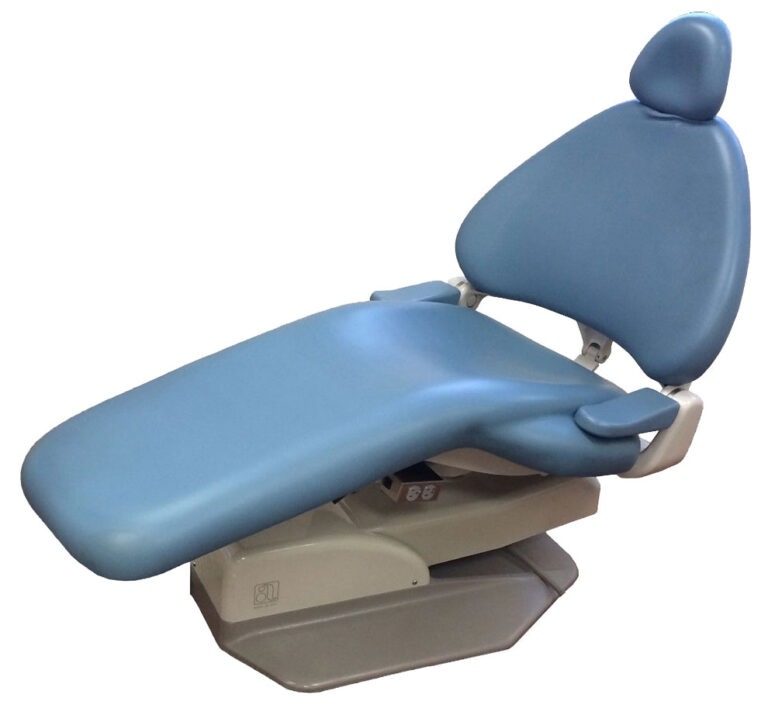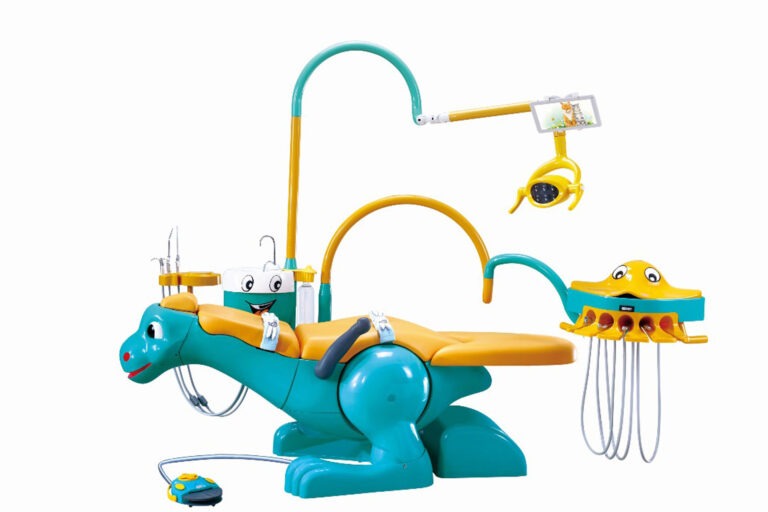As a dental professional, your dental chair is the heart of your practice. It’s where you spend countless hours providing exceptional care to your patients, making their comfort and your efficiency top priorities. That’s why dental chair maintenance and servicing is crucial for ensuring optimal performance, longevity, and patient satisfaction.
In this comprehensive guide, we’ll delve into the essentials of dental chair maintenance and repair, providing you with expert tips and strategies to keep your equipment in top shape. From daily cleaning routines to strategic servicing and proactive upkeep, we’ve got you covered.
Essentials of Dental Chair Servicing for Optimal Performance
Regular servicing is the key to keeping your dental chair functioning at its best. It’s not just a routine task; it’s a critical measure that ensures the uninterrupted operation of this cornerstone equipment. Here’s what a comprehensive servicing plan should include:
- Thorough Inspection: A meticulous examination of the chair for signs of wear, tear, or potential issues. This includes checking the upholstery, hydraulics, electrical components, and mechanical parts. Regular inspections help identify problems early, preventing costly repairs down the line.
- Lubrication and Adjustments: Moving parts, such as the chair’s recline mechanism and armrests, require regular lubrication to operate smoothly. During servicing, these components are lubricated and adjusted to ensure optimal function and prevent premature wear.
- Calibration and Testing: Servicing also involves calibrating and testing the chair’s various systems, such as the foot controls, handpieces, and suction. This ensures that everything is working precisely as it should, enhancing your efficiency and the quality of care you provide.
- Safety Checks: Your patients’ safety is paramount. Servicing includes thorough safety checks to ensure that the chair is stable, the safety stops are functioning correctly, and there are no electrical hazards.
Selecting the Ideal Dental Chair
Choosing the right dental chair is a significant decision that impacts your practice’s success. Consider these factors when making your selection:
- Ergonomics: An ergonomically designed chair promotes comfort for both you and your patients. Look for features like adjustable headrests, lumbar support, and flexible positioning to accommodate various treatment needs.
- Durability: Invest in a chair built to last. High-quality materials, sturdy construction, and reliable components ensure that your chair can withstand the rigors of daily use for years to come.
- Technology Integration: Modern dental chairs often incorporate advanced technology, such as built-in monitors, USB ports, and seamless integration with your practice management software. Consider your tech needs when selecting a chair.
- Brand Reputation: Choose a reputable brand known for producing high-quality, reliable dental chairs. Research customer reviews, industry rankings, and peer recommendations to make an informed decision.
Strategic Weekly and Monthly Dental Chair Maintenance
In addition to regular servicing, implementing a strategic maintenance schedule can help prolong the life of your dental chair. Here’s what to include:
Weekly Maintenance
- Thorough Cleaning: Dedicate time each week to thoroughly clean your dental chair, paying special attention to hard-to-reach areas. Use manufacturer-recommended cleaning products to avoid damaging the upholstery or components.
- Visual Inspection: Conduct a visual inspection of the chair, looking for any signs of wear, damage, or malfunction. Address any issues promptly to prevent them from escalating.
Monthly Maintenance
- Lubrication: Monthly lubrication of moving parts helps keep your chair operating smoothly. Follow the manufacturer’s guidelines for the type of lubricant to use and the specific components that require attention.
- Filter Replacement: Replace the chair’s water and air filters monthly to ensure optimal performance and maintain the purity of the water and air supply.
- Suction System Check: Inspect and clean the suction system, including the valves, hoses, and traps, to prevent blockages and maintain efficient suction power.
Dental Chair Repair and Proactive Upkeep
Even with regular maintenance, repairs may be necessary from time to time. Here’s how to handle repairs and practice proactive upkeep:
- Timely Repairs: Address any issues with your dental chair promptly. Delaying repairs can lead to more extensive damage and costly fixes down the line.
- Professional Service: When repairs are needed, rely on professional service technicians who specialize in dental equipment. They have the expertise and tools to diagnose and fix problems effectively.
- Proactive Part Replacement: Keep commonly needed replacement parts on hand, such as valves, switches, and hoses. This allows for quick repairs and minimizes downtime.
- Upgrade and Refurbishment: Consider upgrading or refurbishing your dental chair as it ages. This can extend its lifespan and improve its functionality, giving you a cost-effective alternative to purchasing a new chair.
Specific Care for Different Dental Chair Brands
While the general principles of maintenance and repair apply to all dental chairs, some brands may have specific care requirements. Here are a few examples:
- A-dec: A-dec chairs are known for their durability and reliability. To maintain optimal performance, follow A-dec’s recommended maintenance schedule, which includes regular inspections, lubrication, and replacement of wear parts.
- Midmark: Midmark chairs feature innovative designs and advanced technology. To care for your Midmark chair, use the company’s proprietary cleaning products and follow the recommended maintenance procedures outlined in the user manual.
- Pelton & Crane: Pelton & Crane chairs are engineered for comfort and efficiency. Maintain your chair’s performance by adhering to the manufacturer’s guidelines for cleaning, lubrication, and servicing.
Addressing Common Dental Chair Issues
Even with diligent maintenance, dental chairs can experience common issues. Here’s how to troubleshoot and address them:
- Hydraulic Problems: If your chair isn’t raising or lowering smoothly, there may be an issue with the hydraulic system. Check for leaks, low fluid levels, or damaged components, and consult a professional for repairs if needed.
- Electrical Malfunctions: Electrical problems can manifest as issues with the chair’s controls, lighting, or power supply. Check for loose connections, frayed wires, or blown fuses, and contact a service technician for complex electrical repairs.
- Upholstery Damage: Tears, punctures, or excessive wear on the chair’s upholstery can compromise patient comfort and infection control. Address upholstery damage promptly by patching or replacing the affected areas.
- Suction Issues: Weak or inconsistent suction can hinder your ability to provide effective treatment. Check for blockages in the suction lines, clean the valves and traps, and replace any worn or damaged components.
Cost Considerations in Dental Chair Servicing
Investing in regular dental chair maintenance and timely repairs can save you money in the long run. Here’s how to manage the costs associated with servicing:
- Preventive Maintenance: Implementing a preventive maintenance schedule can help you avoid costly repairs and extend the life of your dental chair. Budget for regular servicing to keep your chair in top condition.
- Warranty Coverage: Familiarize yourself with your dental chair’s warranty terms and take advantage of any covered repairs or replacements. Keep accurate records of your chair’s purchase date and service history.
- Service Contracts: Consider entering into a service contract with a reputable dental equipment service provider. These contracts often include regular maintenance, priority repairs, and discounted parts and labor rates.
- Budgeting for Repairs: Set aside funds in your practice’s budget for unexpected repairs. Having a dedicated repair fund can help you address issues promptly without straining your finances.
Optimizing Daily Dental Chair Maintenance
Incorporating dental chair maintenance into your daily routine is essential for ensuring optimal performance and longevity. Here are some best practices to follow:
- Cleaning and Disinfection: Clean and disinfect your dental chair after each patient, following the manufacturer’s recommendations for cleaning products and procedures. Pay special attention to high-touch areas, such as the headrest, armrests, and controls.
- Barrier Protection: Use disposable barrier covers on the chair’s headrest, armrests, and other contact surfaces to minimize contamination and simplify cleaning between patients.
- Handpiece Maintenance: Properly maintain your handpieces by cleaning, lubricating, and sterilizing them according to the manufacturer’s instructions. Regular handpiece maintenance helps ensure optimal performance and longevity.
- Suction System Hygiene: Flush the suction system with a cleaning solution at the end of each day to prevent the buildup of debris and maintain efficient suction power. Follow the manufacturer’s guidelines for the type of cleaning solution to use and the flushing procedure.
Comprehensive Dental Chair Maintenance Checklist
To help you stay on top of your dental chair maintenance, here’s a comprehensive checklist to follow:
Daily
- Clean and disinfect the chair after each patient
- Use barrier protection on contact surfaces
- Maintain handpieces according to manufacturer’s instructions
- Flush the suction system at the end of each day
Weekly
- Conduct a thorough cleaning of the chair, paying attention to hard-to-reach areas
- Perform a visual inspection for signs of wear, damage, or malfunction
- Check and replace disposables, such as suction tips and saliva ejectors
Monthly
- Lubricate moving parts according to the manufacturer’s guidelines
- Replace water and air filters
- Inspect and clean the suction system, including valves, hoses, and traps
Quarterly
- Schedule professional servicing and maintenance
- Check and calibrate the chair’s controls and safety features
- Inspect and replace worn or damaged components, such as upholstery, hoses, or valves
Annually
- Conduct a comprehensive servicing and maintenance check
- Consider upgrading or refurbishing the chair as needed
- Review and update your maintenance and repair budget
By following this comprehensive guide to dental chair maintenance and repair, you can ensure that your equipment remains in top condition, providing optimal performance and patient comfort. Regular servicing, strategic maintenance, and prompt repairs are key to maximizing the lifespan and functionality of your dental chair.
Remember, investing in the upkeep of your dental chair is an investment in the success of your practice. By prioritizing maintenance and staying proactive about repairs, you can deliver exceptional care to your patients while minimizing downtime and costly fixes.
As you implement these expert tips and strategies, you’ll find that your dental chair becomes a reliable and efficient partner in your practice, supporting you in providing the highest quality of care to your patients for years to come.
FAQs
How often should a dental chair be serviced?
It is recommended to service your dental chair annually. Regular servicing helps identify and address potential issues before they escalate.
What are some essential daily maintenance practices for a dental chair?
Key daily maintenance tasks include:
Flushing through handpieces and air/water syringes to keep lines clean
Lubricating moving parts for smooth operation
Disinfecting the chair after each patient to maintain hygiene
What should I check during weekly and monthly dental chair maintenance?
Weekly: Inspect and replace O-rings and gaskets on handpiece couplers.
Monthly: Clean and replace plaster traps and check emergency systems like nitrous oxide units.
How do I address common repair issues with dental chairs?
Conduct regular checks for air supply and pressure gauges, and ensure nothing is obstructing cut-out switches. For complex issues, consult a professional service provider.
What are the cost implications of dental chair servicing?
While there is a cost to servicing, it should be viewed as an investment. Regular servicing extends the life of your equipment and ensures compliance with health regulations.
Are there specific maintenance requirements for different brands of dental chairs?
Yes, brands like Belmont, Fedesa, and Ancar might have unique maintenance needs. Always follow the manufacturer’s specific instructions for your chair model.
What should I do if my dental chair’s water filter is causing issues?
Regularly check and clean the water filter to prevent leaks and blockages. Consider upgrading to a chair with a more advanced filtration system if persistent problems occur.
How can I prevent cross-contamination in the dental chair?
Ensure thorough disinfection and sterilization of handpieces and suction cannulas after each use. Use disposable barriers wherever possible.
In conclusion, the maintenance of your dental chair is a crucial aspect of running a successful dental practice. By following these detailed guidelines, you can ensure that your chair remains a reliable, hygienic, and efficient tool for providing excellent dental care.

